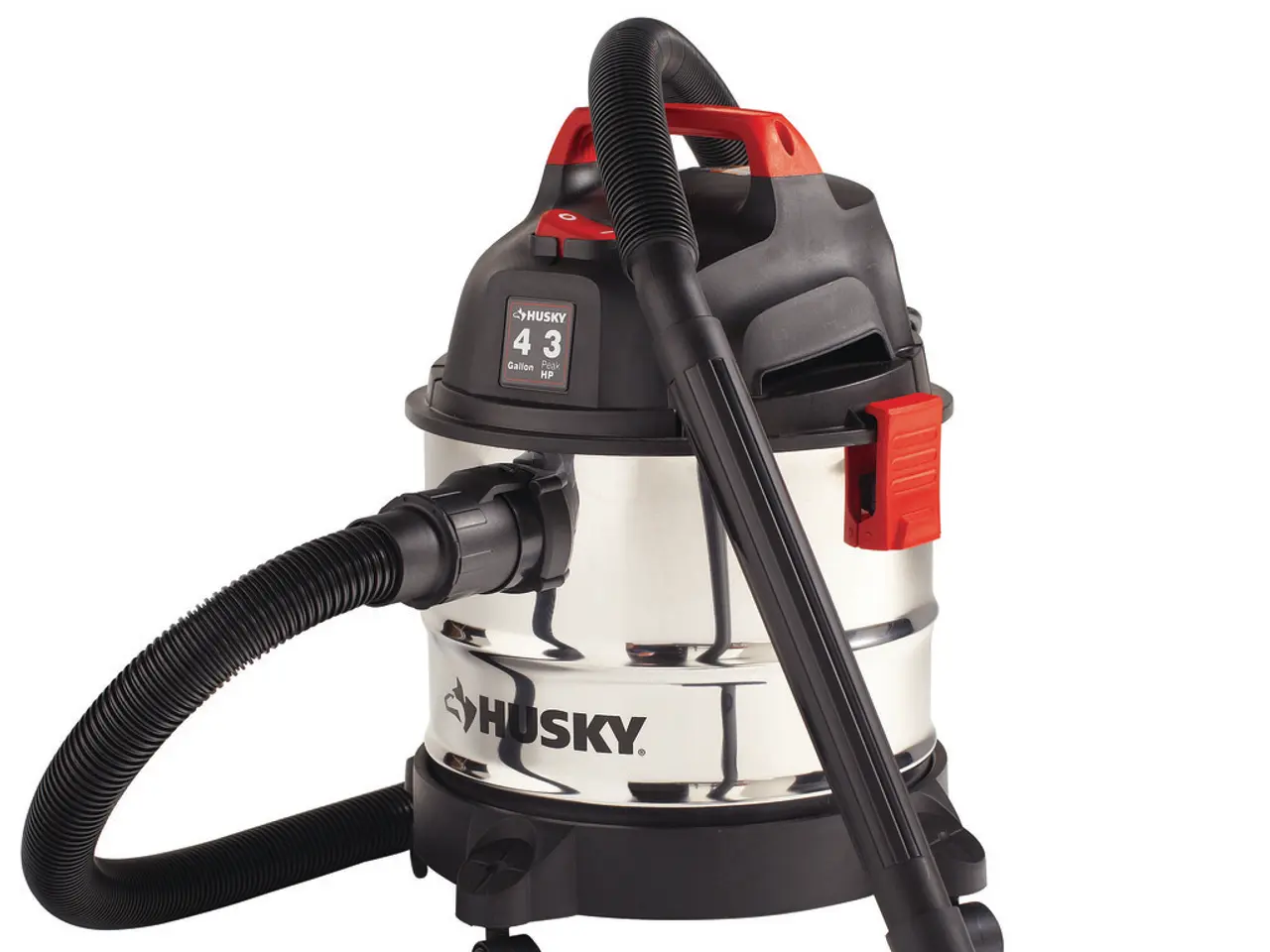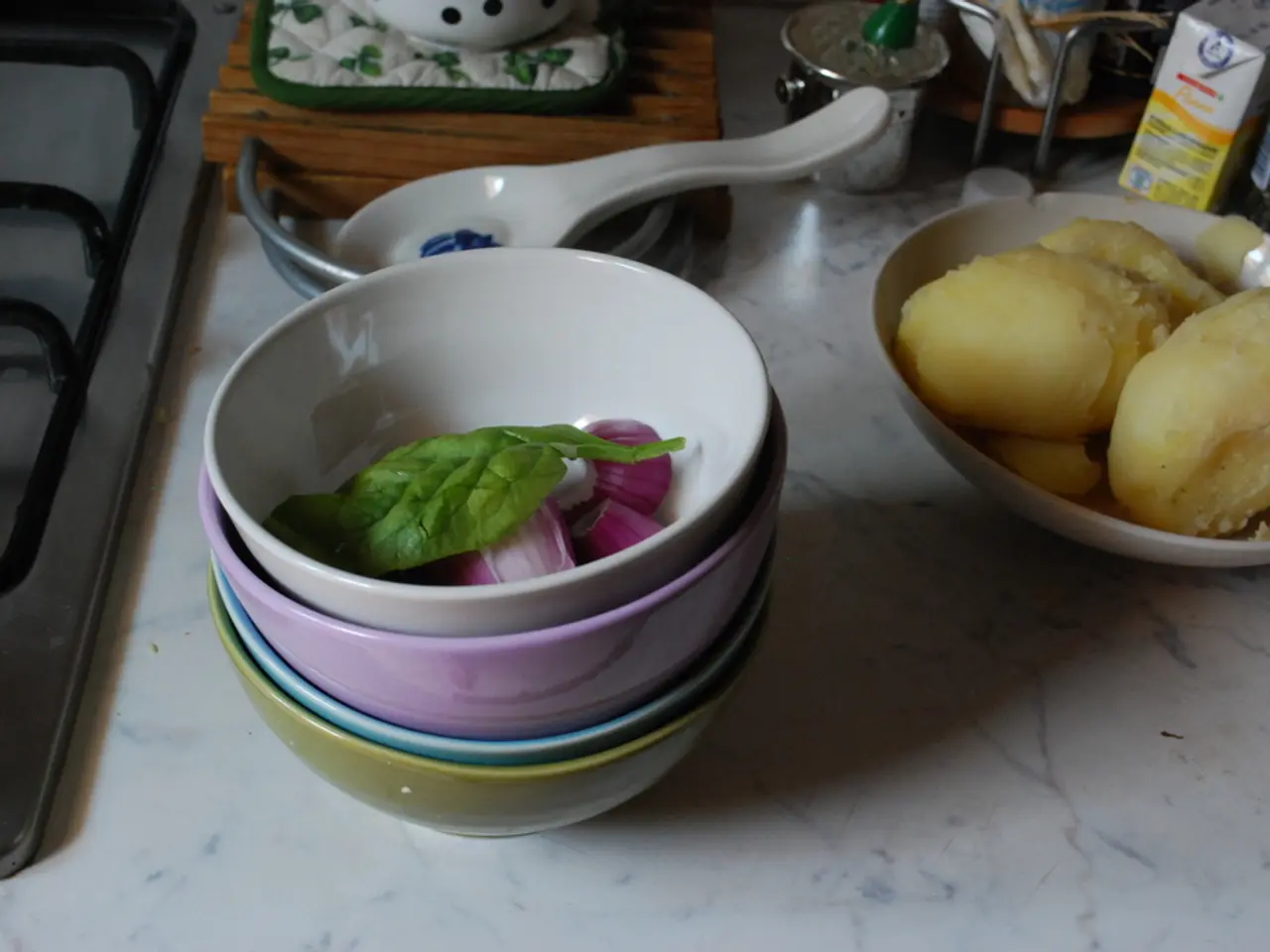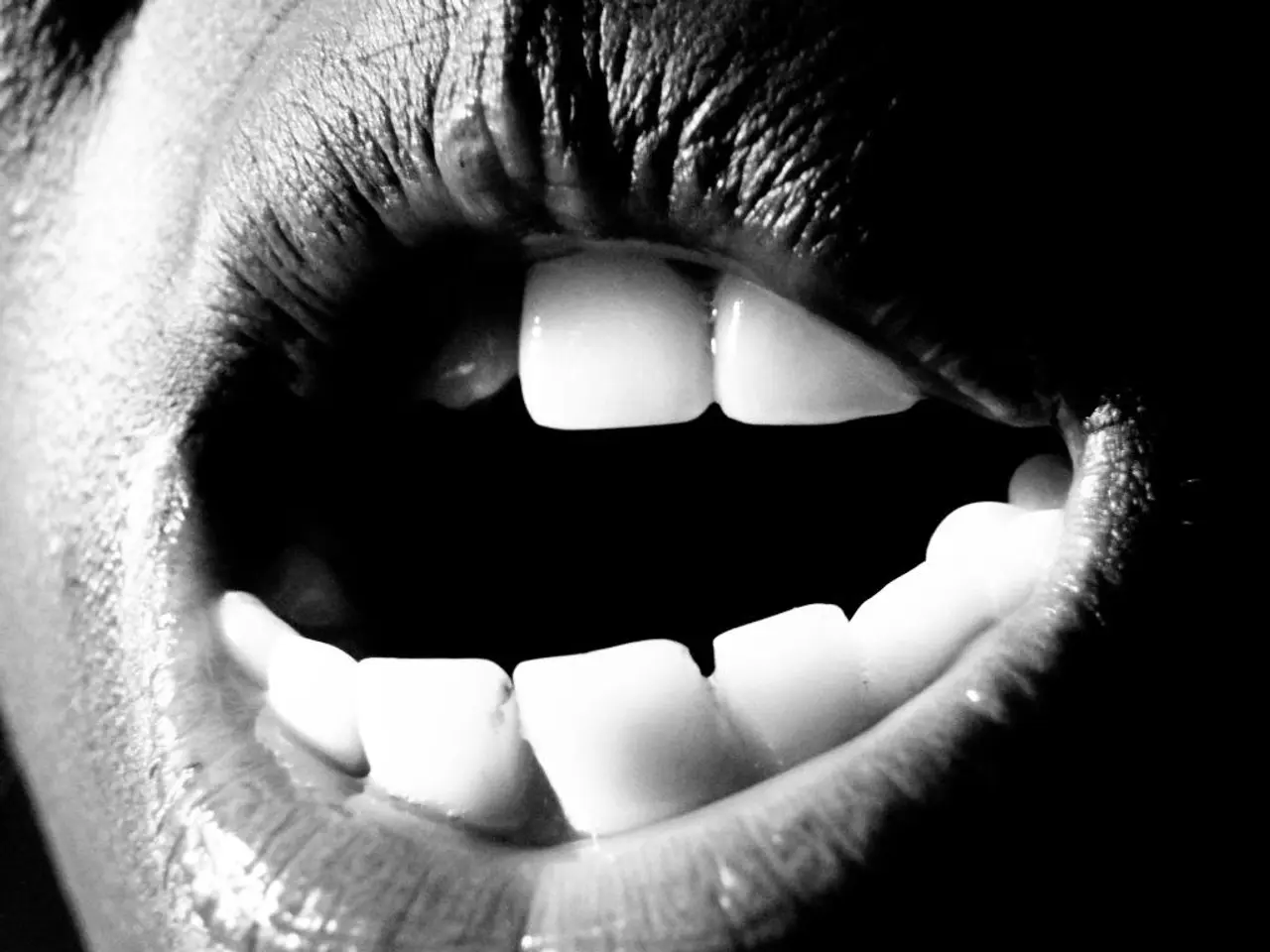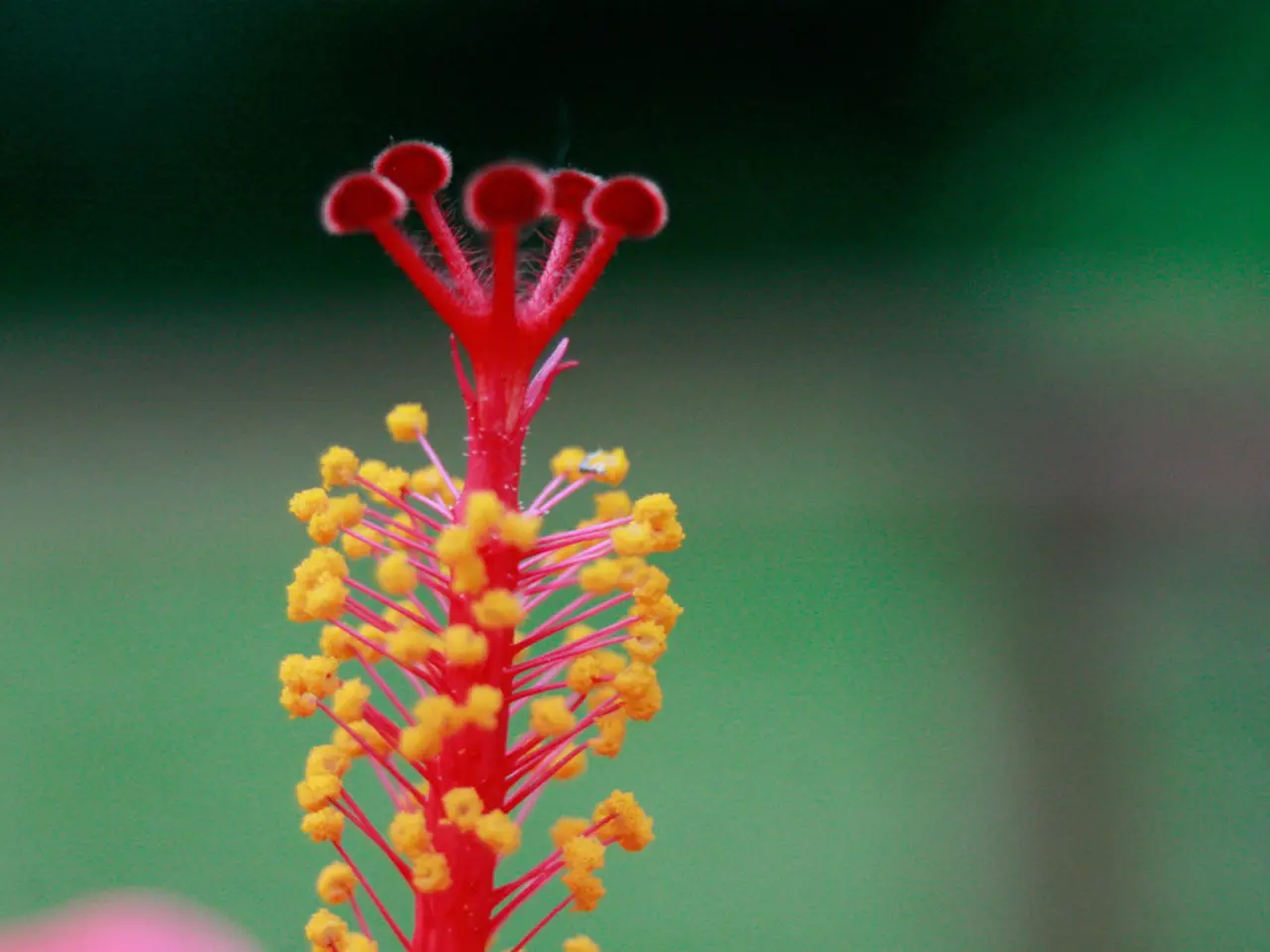Home Solutions for Eliminating Calluses: Exploring Nine DIY Treatments
Calluses, thickened areas of tough, hard skin, can be a common problem for many people. However, with the right home remedies and lifestyle changes, you can effectively treat and prevent calluses from forming.
To treat calluses at home, a combination of gentle exfoliation, moisturizing, and soaking can be beneficial. Start by soaking your feet in warm water for 10-20 minutes to soften the callused skin. You can enhance exfoliation by adding natural ingredients such as Epsom salt, vinegar, lemon juice, or oatmeal to the water.
After soaking, gently exfoliate the softened skin using a pumice stone or foot file. A foot file is recommended for maintaining smaller calluses. Be careful not to scrub too aggressively to avoid damaging healthy skin.
Following exfoliation, apply salicylic acid-based products like callus remover gels, cushions, or ointments. These products contain keratolytic agents that break down thickened skin, making calluses peel away naturally. Popular options include Dr. Scholl’s Salicylic Acid Callus Remover Cushions and ointments that are applied and covered with a plaster to be repeated every couple of days.
Regular moisturizing with creams or oils after exfoliating is essential to keep the skin soft and prevent callus formation. Products containing natural oils or dead sea salt can further smooth rough skin.
Prevention through lifestyle changes is also crucial. Wearing properly fitting shoes with good support and cushioning can reduce friction and pressure, the main causes of callus formation. Use protective pads or cushions inside shoes at pressure points prone to calluses to prevent new callus formation.
Maintaining regular foot hygiene, including soaking, exfoliating, and moisturizing, can help avoid buildup of dead skin. If you are an athlete or on your feet often, schedule periodic foot care routines to keep calluses under control.
Here's a summary table of the methods, descriptions, and notes:
| Method | Description | Notes | |---------------------------|--------------------------------------------------------|-------------------------------| | Warm Soak | Soften calluses before exfoliation | Add Epsom salt, lemon juice, or vinegar for added benefits | | Gentle Exfoliation | Use pumice stone or foot file post-soak | Avoid aggressive scrubbing | | Salicylic Acid Products | Apply gels, cushions, or ointments containing salicylic acid | Repeat application as needed | | Moisturizing | Use creams or oils to keep skin soft | Helps prevent recurrence | | Proper Footwear | Wear well-fitting, cushioned shoes | Reduces friction and pressure | | Protective Pads | Cushion pressure points inside shoes | Prevents new callus formation |
By regularly soaking, exfoliating, applying salicylic acid treatments, and maintaining foot care with moisturizers and proper footwear, you can both treat existing calluses effectively and prevent future ones from developing.
It's important to remember that people with diabetes, heart disease, circulation problems, bleeding, pus, or discharges, severe pain, or recurring or persistent calluses should speak with a doctor. Also, it's not recommended to use sharp objects to remove or reduce calluses as it can lead to injury, bleeding, and infection.
Simple home remedies for getting rid of calluses include treatments that soften or exfoliate the skin, such as baking soda paste, pumice stones, foot files, exfoliating creams, and Epsom salts. People can speak with staff at shoe stores or measure their feet at home to check whether their shoes fit correctly. A physician, pharmacist, or podiatrist may be able to recommend a suitable cream or lotion for treating calluses.
Keeping the toenails trim and neat may help prevent calluses by reducing friction. Calluses can develop on various areas of the skin due to excessive pressure or rubbing, such as the feet, fingertips, and palms of the hands.
- In addition to home remedies, people with ulcerative colitis, depression, or conditions like diabetes, macular degeneration, COPD, atopic dermatitis, or psoriasis should seek medical advice before treating calluses.
- For people dealing with dry skin conditions or skin-care concerns, predictive science and health-and-wellness products can offer solutions to combat callus formation.
- Beyond feet, obesity can lead to type 2 diabetes and various skin-care issues, including calluses, particularly on pressure points such as the lower back or hips.
- Fitness-and-exercise routines can help manage weight, reducing the occurrence of calluses caused by excessive pressure or friction.
- Aq, a known mineral, can be added to warm soaks as an additional step to soften callused skin, providing an extra layer of care.
- Degeneration of the skin due to age or health factors can make calluses more persistent, requiring consistent home care and possibly prescription medications from a dermatologist.
- After a long day of walking or intense workouts, certain footwear offers arch support and cushioning, helping prevent callus development on the feet.
- For those with multiple foot issues, such as calluses, ingrown toenails, or plantar fasciitis, science-backed home remedies or professional podiatrist care can provide targeted relief.
- Home care methods for calluses, such as soaking, exfoliating, and moisturizing, should be incorporated into a daily routine for maintenance and to prevent future calluses.
- By wearing appropriate footwear, maintaining good foot hygiene, and following a consistent home care routine, you can ensure that Type-A calluses, which are the hardest to manage, do not form or persist over time.
- Incorporating a regular fitness-and-exercise routine, health-and-wellness practices, and skin-care regimen can lead to overall wellness and better skin health, including reduced callus formation.




